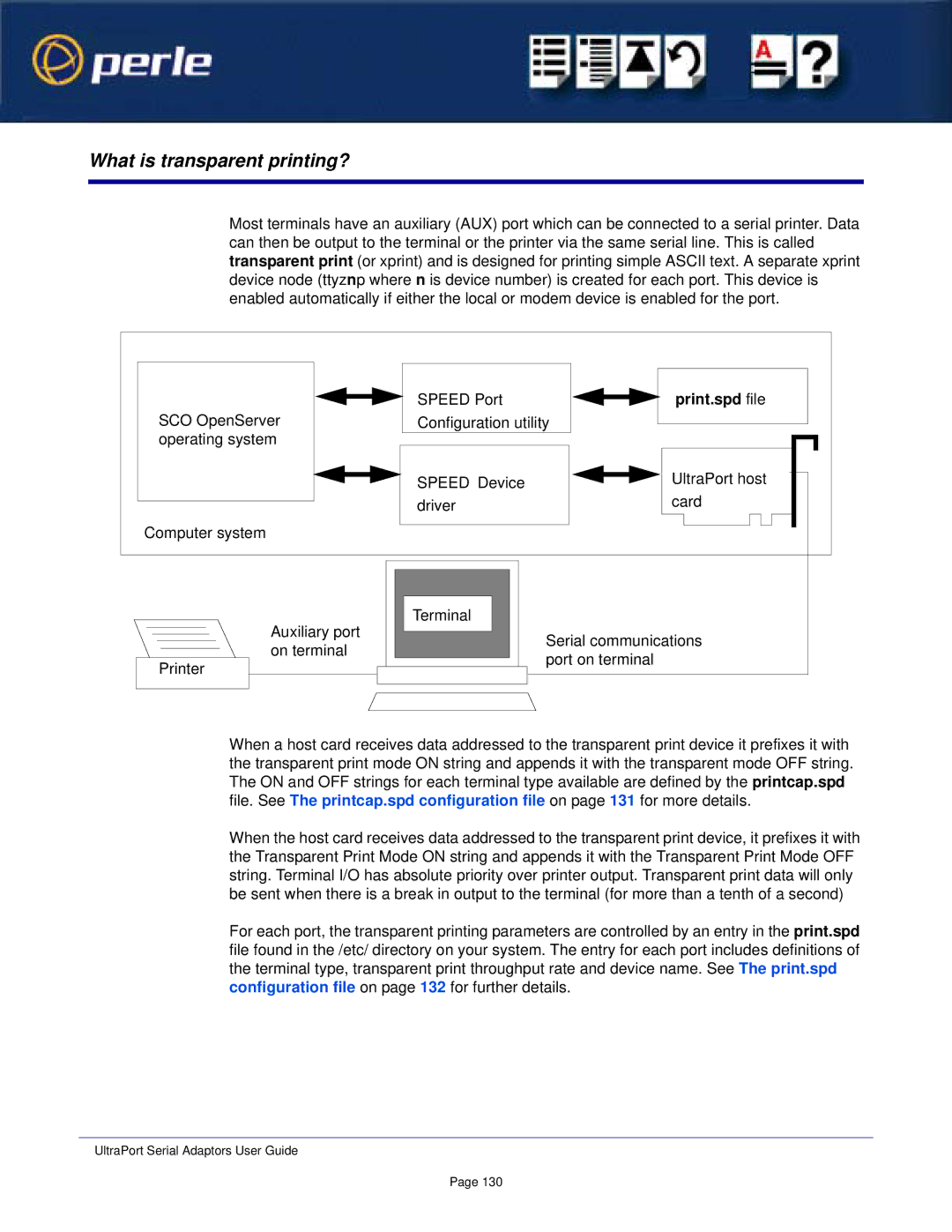
What is transparent printing?
Most terminals have an auxiliary (AUX) port which can be connected to a serial printer. Data can then be output to the terminal or the printer via the same serial line. This is called transparent print (or xprint) and is designed for printing simple ASCII text. A separate xprint device node (ttyznp where n is device number) is created for each port. This device is enabled automatically if either the local or modem device is enabled for the port.
SCO OpenServer | SPEED Port | print.spd file |
Configuration utility | ||
operating system |
|
|
| SPEED Device | UltraPort host |
| driver | card |
Computer system |
|
|
Auxiliary port | Terminal |
|
| Serial communications | |
on terminal |
| |
| port on terminal | |
Printer |
| |
|
| |
When a host card receives data addressed to the transparent print device it prefixes it with the transparent print mode ON string and appends it with the transparent mode OFF string. The ON and OFF strings for each terminal type available are defined by the printcap.spd file. See The printcap.spd configuration file on page 131 for more details.
When the host card receives data addressed to the transparent print device, it prefixes it with the Transparent Print Mode ON string and appends it with the Transparent Print Mode OFF string. Terminal I/O has absolute priority over printer output. Transparent print data will only be sent when there is a break in output to the terminal (for more than a tenth of a second)
For each port, the transparent printing parameters are controlled by an entry in the print.spd file found in the /etc/ directory on your system. The entry for each port includes definitions of the terminal type, transparent print throughput rate and device name. See The print.spd configuration file on page 132 for further details.
UltraPort Serial Adaptors User Guide
Page 130
